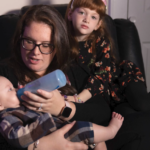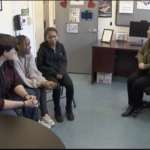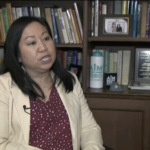July 2013
Domestic minor sex trafficking (DMST) – the commercial sexual exploitation of children within U.S. borders – is a growing problem. Once involved in commercial sexual exploitation, according to group counselors Kristine Hickle and Dominique Roe-Sepowitz, “individuals are at increased risk for economic instability and poverty, as adolescents who begin selling or trading sex prior to any legitimate employment experience may lack skills necessary to obtain employment and achieve economic stability after escaping their trafficking situation.” In addition, they state, “adolescents who run away from home are at increased risk for being exploited and coerced by pimps-traffickers, and may engage in and become victim to violence, including sexual or physical assault.”
It is important to note that DMST is not prostitution. Legally, minors cannot consent to sex with an adult, so, as Forbes Magazine reporter Brooke Axtell observed, “the use of the term ‘child prostitution’ in the media is misleading. In any other context, this would be considered statutory rape. Force, fraud and coercion are used to control the victim’s behavior.”
There is a myth that sex-trafficking is only prevalent in poorer countries. It is widespread in developed nations as well. Because DSMT is hidden, statistics are hard to calculate; however, according to the US Department of Justice (DOJ), more than 250,000 American youths are at risk of becoming victims of commercial sexual exploitation. Human-trafficking, according to the DOJ, is the second leading criminal industry behind drug-trafficking, and half of all the victims are minors.
There is an alarming disconnect between the treatment of domestic-trafficked minors and their status as victims. Many do not receive shelter and treatment in a safe residential setting; rather, they are re-victimized in juvenile-detention facilities. Due to its covert nature, DMST is under the radar in suburbia, yet, a 2011 study by researchers from Hofstra University reported more than 11,000 victims of sex-trafficking on Long Island.
Hofstra Sociology Professor Dr. Gregory Maney, the lead investigator, reported that those victims who sought private help were only the tip of the iceberg. And that the number did not include victims that went to public-service providers, moved out of the area, have not been able to escape their captors or died in the process of being trafficked.
It probably seems unlikely that anyone close to you could be at risk of being sex trafficked. However, traffickers are proficient at seducing and disarming their marks, usually vulnerable young women. Two warning signs for spotting a sex-trafficker include premature promises of undying love that are aimed at cementing a quick emotional connection and a promise of employment.
Hopefully, greater public awareness of DMST will help bring about more humane treatment, better policies and improved access to resources, such as long-term housing and quality mental health care for victims. As Axtell wrote of taking steps to help children break free from sexual exploitation, “we [must] face the disturbing truth that the demand for girls’ bodies is happening in our own communities.”













